See 9 National Parks on This Picturesque Road Trip Through the American West — Including the Grand Canyon, Arches, and Zion
Plus, you'll drive through the Navajo Nation Reservation and visit the Four Corners.
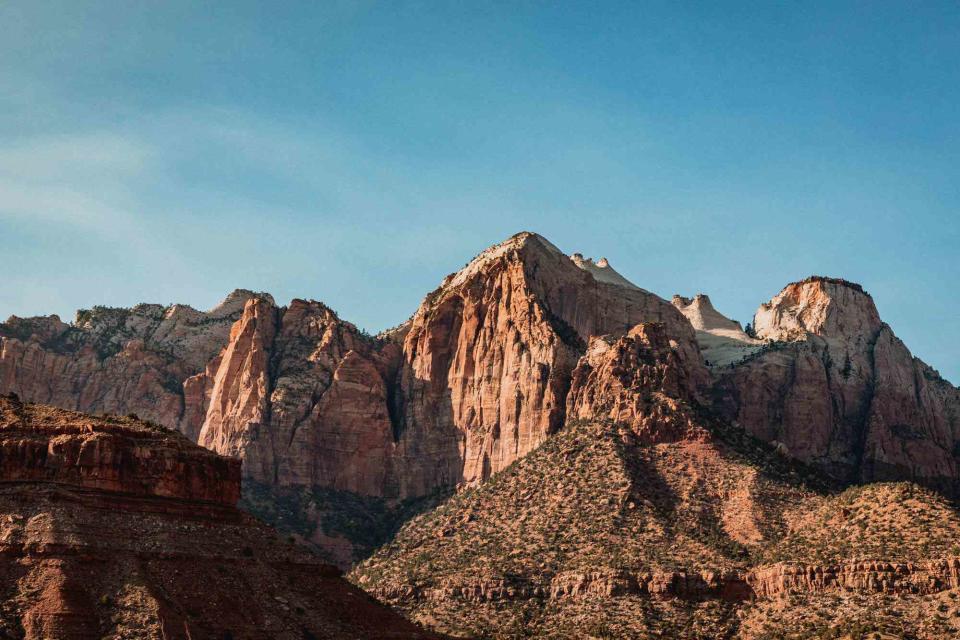
Don Elm/Travel + Leisure
With so much to do and see in the world, there’s something wonderfully efficient about a road trip that takes you through five states and nine national parks in one go. The Grand Circle road trip, best visualized here, starts in Nevada and passes through Utah, Colorado, New Mexico, and Arizona before returning where it started. The giant loop provides a great introduction to the Southwest as it takes travelers to nine national parks, a national monument, and a handful of towns worthy of a lengthy stopover.
For a route that seems to have it all, there is very little information on it. Some versions of the route pass only through Utah and Arizona — a truncated version that still includes six national parks. But if you have the time, we recommend the Grand Grand Circle road trip, which also passes through Colorado and New Mexico and includes a visit to Four Corners National Monument where four states meet.
According to our calculations, the full loop covers well over 1,500 miles and will take a full 15 days (if not more) to complete. The route starts and ends in Las Vegas, a major flight hub that is less than three hours from Zion National Park — the first stop on the road trip. (You can also fly in and out of Albuquerque. Though, for simplicity's sake, we built the trip around arrival and departure from Las Vegas.) Here we go!
Day 1 and 2: Las Vegas to Zion National Park
After picking up a car in Las Vegas and making the three-hour journey to Zion National Park in Utah, the fun begins. The first park on the Grand Circle is also Utah’s first national park, and it’s become iconic for its red sandstone cliff walls and narrow slot canyons. Spend a full day exploring Zion’s not-to-miss adventures like Zion Narrows, a watery gorge hike with 1,000-foot-tall walls, and the Emerald Pools, which have waterfalls and a hanging garden.
Day 3 and 4: Bryce Canyon National Park and Capitol Reef National Park
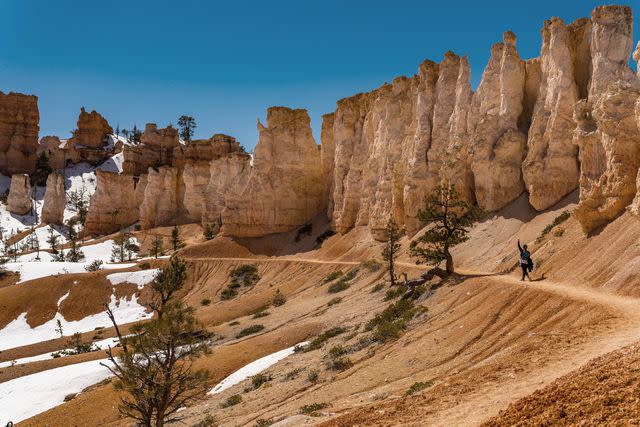
Tessa Desjardins/Travel + Leisure
It takes less than two hours to drive to Bryce Canyon National Park from Zion, so you should be able to get in a full day of exploration. Like Zion, Bryce Canyon has lots of stunning red rock, which is extra vibrant in photos taken at sunrise and sunset. But while Zion is known for its sky-high canyon walls, Bryce is famous for the crimson-colored hoodoos, spire-shaped rock formations, and the Bryce Amphitheater. Your best bet is to hike the Rim Trail, which provides views over the amphitheater.
After a full day at Bryce Canyon, make the two-hour drive to the next park on the Grand Circle: Capitol Reef National Park.
Day 5 and 6: Capitol Reef National Park and Moab
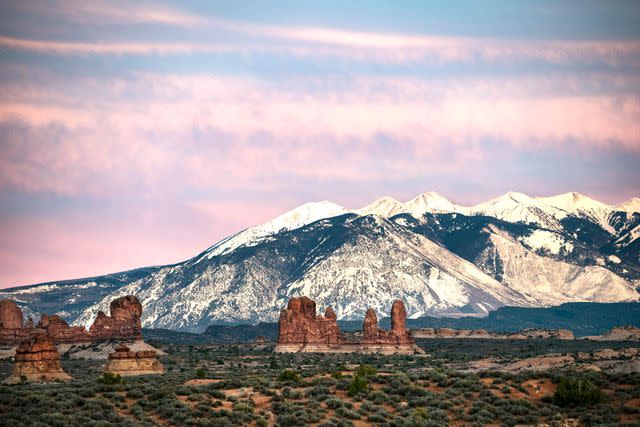
Brad McGinley Photography/Getty Images
You’ll want to spend at least one full day at Capitol Reef National Park, which is known for the bizarre rock formations that surround the long “wrinkle” in Utah’s south-central desert known as the Waterpocket Fold. Highlights inside this national park include the Chimney Rock pillar, the Hickman Bridge arch, and a series of white sandstone domes. To the north, you can walk among the towering monoliths of Cathedral Valley.
After exploring the park, make the two-hour drive to Moab — an adventure town with mountain biking, rafting, and Jeeping that’s easily worth a full day of exploration (if not more). You’ll pass the next two national parks on your drive in, but both are within 30 minutes of Moab and an easy backtrack once you’ve had a day back in “civilization.”
Day 7 and 8: Arches National Park and Canyonlands National Park
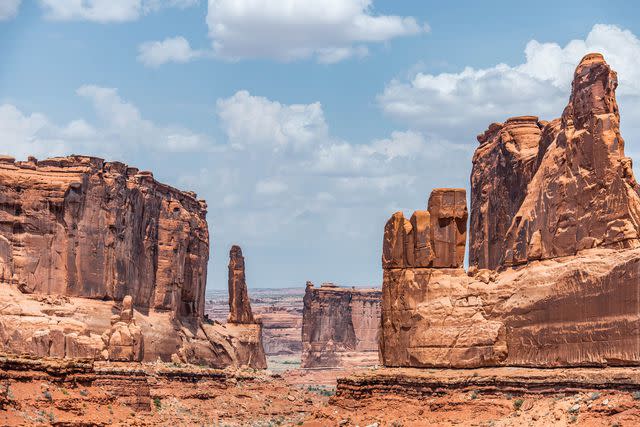
Suphanat Wongsanuphat/Getty Images
Arches National Park is less than 10 minutes from downtown Moab, so if you want to sleep in, this is the day to do it. Arches is small compared to most other Utah parks, but it packs a punch. Within the 120-square-mile park are over 2,000 towering sandstone arches, including the massive Delicate Arch and the unbelievably long and thin Landscape Arch.
From Arches, it’s just a 30-minute drive to Canyonlands National Park, which you passed on your way into Moab. Canyonlands has everything from Native rock paintings to the towering rock pinnacles found in the Needles area. For views over the desert, make your way to the Island in the Sky, a giant, flat-topped mesa with overlooks galore.
Day 9 and 10: Black Canyon of the Gunnison National Park and Telluride
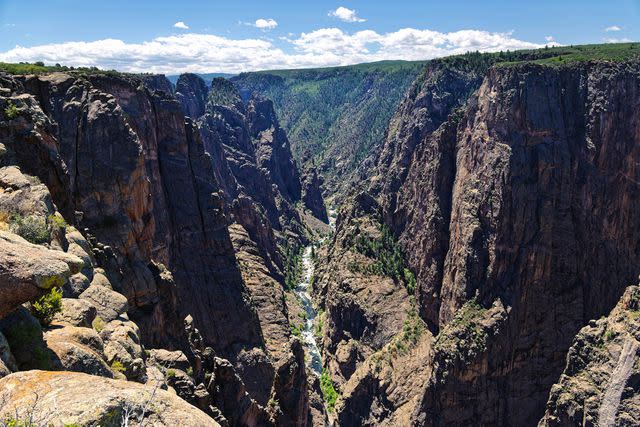
Mark C Stevens/Getty Images
After a day in Canyonlands, hop back in your trusty vehicle and make the road trip’s longest segment yet — a three-hour drive out of Utah and into Colorado. Once you’ve crossed the state line, it’s around two hours to your next destination: Black Canyon of the Gunnison National Park.
The red rock landscapes of Utah are long gone, replaced by dark Precambrian rock. But, like many of the parks in Utah, Black Canyon is built around a deep, steep-walled gorge. You can travel all the way down to the bottom of the gorge via the winding East Portal Road, or explore the South Rim Road and enjoy the 12 overlooks and mini hiking trails that wind off the route. (Pro-tip: Don’t miss a stop at the striped Painted Wall cliff face!)
After a day in the Black Canyon, make the scenic, 1.5-hour drive to the mountain town of Telluride, which is wildly picturesque and offers plenty to do on your “down day” — including hikes to waterfalls and a free gondola up the mountain.
Day 11 and 12: Mesa Verde National Park and Four Corners National Monument
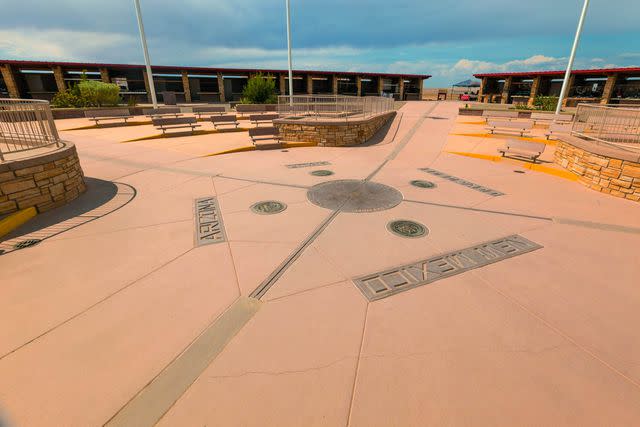
Jorge Villalba/Getty Images
The landscape goes from mountainous to high desert on the 1.5-hour drive between Telluride and Mesa Verde National Park. This Colorado park is particularly special because it protects several well-preserved Ancestral Puebloan cliff dwellings, including the huge Cliff Palace. These homes, which are built into the rock, can be explored on foot, or you can drive the Mesa Top Loop Road past the park’s many archaeological sites and overlooks.
Not long after leaving Mesa Verde, you’ll pass through the Ute Mountain Reservation and then into the Navajo Nation Reservation. In the latter, you can swing through the Navajo Nation’s Four Corners National Monument, where you can stand at the point where all four states — Utah, Colorado, New Mexico, and Arizona — meet. The Four Corners National Monument is less than an hour from Mesa Verde, but the next park on the list — Petrified Forest National Park in Arizona — is still another three hours away.
Day 13 and 14: Petrified Forest National Park and Grand Canyon National Park
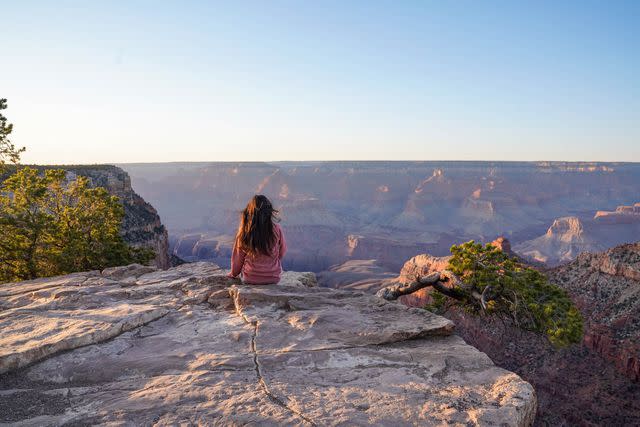
Lauren Breedlove/Travel + Leisure
Petrified Forest National Park is the first stop in Arizona, the final and fifth state in the Grand Circle Road Trip. This lesser-known park doesn’t see anywhere near the number of visitors as your next stop, Grand Canyon National Park, so soak up the solitude and enjoy the quiet trails that pass through the park’s colorful, petrified forest. For a dose of local history, check out the petroglyphs of Newspaper Rock and the ruined village of Puerco Pueblo.
After a day in Petrified Forest National Park, make the three-hour drive northwest to the South Rim of Grand Canyon National Park, the final stop on the Grand Circle. The immense, mile-deep Grand Canyon has many viewpoints, including Mather Point and the Yavapai Observation Station. If you need to stretch your legs, the Bright Angel Trail is a popular and easy-to-access hike.
Day 15: Return to Las Vegas and Fly Home
The drive from the South Rim of the Grand Canyon to Harry Reid International Airport (LAS) in Las Vegas takes around 4.5 hours, so make sure to budget plenty of time.
For more Travel & Leisure news, make sure to sign up for our newsletter!
Read the original article on Travel & Leisure.

